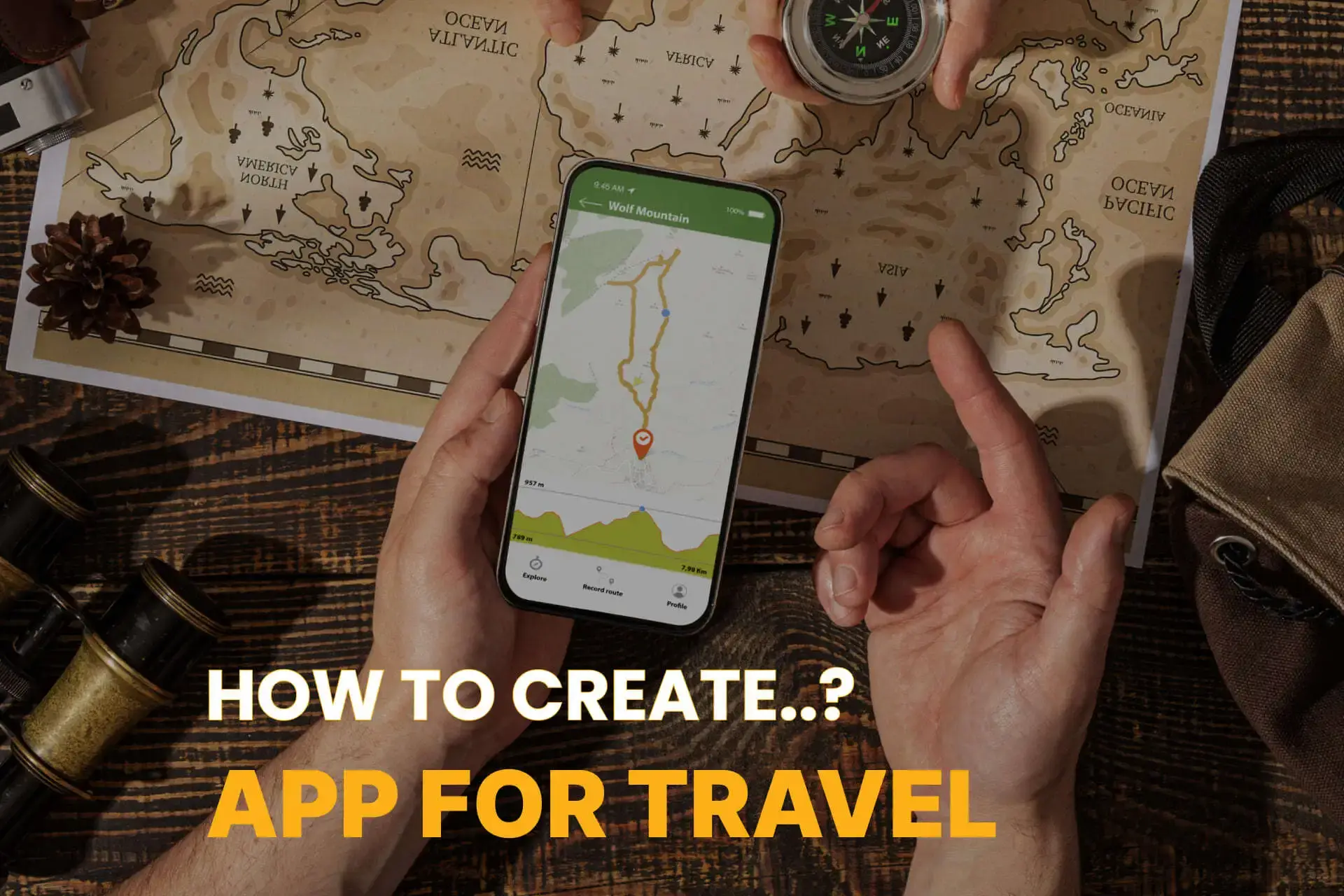Introduction
The adventure travel industry is booming, and travelers are seeking personalized, off-the-beaten-path experiences that standard travel platforms often can’t deliver. To keep up with this demand, adventure travel companies need an app that helps their clients plan, organize, and enjoy their trips with ease. A custom itinerary app offers the perfect solution—combining flexible planning tools, real-time updates, and personalized suggestions, all in one place.
In this post, we’ll explore how to create a custom itinerary app tailored specifically for adventure travel companies. From key features like offline access and map integration to emerging trends such as AI-powered recommendations, we’ll guide you through everything you need to know to deliver a standout travel app.
Why Adventure Travel Companies Need a Custom Itinerary App
In the competitive world of travel, offering a personalized and seamless experience is crucial. A custom itinerary app can provide travelers with all the tools they need to plan, book, and manage their trips, while keeping them engaged throughout their journey. Here’s why it’s a must-have for adventure travel companies:
- Personalized Travel Experience: Tailor trips to individual preferences with detailed itineraries and personalized recommendations.
- Real-Time Information: Provide travelers with real-time updates on weather, local attractions, and last-minute changes.
- Offline Functionality: Adventure travelers often visit remote locations. An app with offline access ensures they have everything they need, even without a network connection.
- Streamlined Trip Management: Travelers can manage bookings, activities, and accommodations in one place, reducing the hassle of planning.
Key Trends in Travel App Development
The travel industry is constantly evolving, and keeping up with the latest trends can help you design an app that meets user expectations and stands out in a crowded market. Here are some of the most important trends to consider when building a custom itinerary app for adventure travelers.
1. AI-Powered Recommendations
Personalization is one of the hottest trends in travel apps today. By using AI to analyze traveler preferences and past behavior, you can offer personalized recommendations for activities, dining, and accommodations. This not only enhances the user experience but also increases the likelihood of repeat bookings.
Key Features to Include:
- AI-driven activity and destination recommendations based on user preferences
- Smart filters for adventure types (e.g., hiking, rafting, cultural experiences)
- Personalized itineraries that adjust in real-time based on user behavior
2. Offline Access and Map Integration
Adventure travelers often head to remote locations where internet connectivity is limited or non-existent. Ensuring your app has offline capabilities for maps, itineraries, and important travel information is critical for user satisfaction.
Key Features to Include:
- Downloadable offline maps for navigation in remote areas
- Offline access to itineraries, travel documents, and contact information
- GPS integration for tracking current location even without internet
3. Social Sharing and Group Collaboration
Many travelers love to share their adventures with friends and family. By integrating social sharing and group collaboration features, you can enhance user engagement and create a sense of community around your brand.
Key Features to Include:
- Social media sharing options for photos, videos, and trip updates
- Collaborative itinerary planning for group trips
- Real-time group chat and notifications
4. Sustainability and Eco-Friendly Travel
Sustainability is a growing concern for many travelers, especially those who enjoy eco-friendly adventures. Your app can cater to this by offering recommendations for sustainable activities, green accommodations, and tips on minimizing environmental impact during their travels.
Key Features to Include:
- Eco-friendly travel options and suggestions for each destination
- Carbon footprint calculators for flights and other travel methods
- Partnerships with sustainable tourism operators and accommodations
5. Augmented Reality (AR) for On-Location Exploration
Adding AR features can provide travelers with enhanced on-location experiences. For example, travelers can use AR to learn more about historical landmarks, local flora and fauna, or to discover hidden paths during hikes.
Key Features to Include:
- AR-based exploration guides for natural and cultural sites
- Interactive AR maps highlighting points of interest
- AR overlays for real-time information on nearby attractions
Must-Have Features for a Custom Itinerary Travel App

To ensure your custom itinerary app stands out and provides value to both adventure travelers and your company, it’s important to incorporate features that enhance the user experience. Here are the must-have features to include in your travel app.
1. Customizable Itinerary Builder
The core of any travel app is the itinerary builder. It should allow users to create, edit, and manage their travel plans easily. Travelers should be able to add activities, accommodations, and transportation options with just a few taps.
Key Features to Include:
- Drag-and-drop itinerary creation
- Customizable activity and accommodation lists
- Time slots for each activity, including reminders and notifications
- Multi-day trip planning with detailed breakdowns
2. Real-Time Updates and Notifications
Travel plans can change at the last minute, especially in the adventure travel space. Your app should offer real-time updates to notify users of flight delays, weather changes, or alterations to their bookings.
Key Features to Include:
- Push notifications for updates on flight status, weather, and booking changes
- Alerts for activity start times, transportation reminders, and daily summaries
- Integration with third-party services for real-time flight and weather tracking
3. Activity Booking and Ticketing Integration
The convenience of booking activities, tours, or transportation directly from the app is a huge advantage for travelers. Integrating booking functionality makes it easier for users to arrange everything in one place without needing to switch between multiple platforms.
Key Features to Include:
- In-app booking for activities, tours, and transportation
- Integration with third-party booking platforms (e.g., TripAdvisor, Expedia)
- Secure payment processing and automatic receipt storage
4. Budget Management and Expense Tracking
Adventure travel often involves managing a tight budget. An integrated expense tracker can help users monitor their spending, manage receipts, and calculate costs for the entire trip.
Key Features to Include:
- Budget planner for trip expenses (accommodation, transport, activities)
- Real-time expense tracking with receipt upload functionality
- Currency conversion tools and spending alerts
5. Local Recommendations and Travel Guides
Adventure travelers often seek out authentic, off-the-beaten-path experiences. Your app can offer curated travel guides with local recommendations for food, activities, and accommodations.
Key Features to Include:
- Location-based recommendations for food, activities, and attractions
- User-generated reviews and ratings for local experiences
- Interactive maps showing nearby points of interest

Pro Tips for Developing a Custom Itinerary App
Creating a successful custom itinerary app for adventure travel companies requires more than just integrating the right features. Here are some expert tips to ensure your app delivers exceptional value:
1. Start with an MVP and Gather Feedback
Start small by launching a Minimum Viable Product (MVP) with core features like itinerary building and offline access. Once the app is in the hands of real users, gather feedback and refine the app based on their needs and preferences. This approach will help you prioritize the most useful features.
2. Focus on User Experience (UX)
Your app needs to be user-friendly and intuitive. Adventure travelers might not have time to figure out complicated app features when they’re on the go. Focus on creating a seamless, clean interface with minimal clicks to get the most important information.
3. Optimize for Offline Use
Since adventure travelers often find themselves in remote areas with no cell service, it’s crucial that your app works smoothly offline. Maps, itineraries, and essential information should be accessible without an internet connection.
4. Scalability and Flexibility
Your app should be designed to scale as your company grows. Whether you’re offering more destinations, adding new languages, or introducing new features, your app’s architecture should support future updates and expansions.
5. Leverage Partnerships for Added Value
Consider partnerships with tour operators, hotels, and activity providers to offer special deals or in-app booking options. This can enhance the user experience while providing additional revenue streams for your company.
Case Study: Questy.org.pl
As proof of our ability to create highly successful and innovative travel apps, we’d like to highlight our work on Questy.org.pl—an outdoor treasure-hunting app that has transformed the adventure travel landscape in Poland.
Questy is an interactive outdoor game that involves following rhymed clues to discover hidden treasures at the end of a journey. The app, designed for adventure seekers, blends technology with outdoor exploration, offering users an immersive experience as they navigate quests, complete tasks, and explore nature.
Key Highlights of Questy:
- Over 50,000 Downloads: The app has attracted thousands of users with its unique concept.
- 4.6-Star Rating: Consistently positive reviews for user experience and functionality.
- Cross-Platform: Built using React Native, the app runs seamlessly on both iOS and Android.
- Core Features: Includes authentication, personalized profiles, quest navigation, rankings, and awards.
Questy’s success proves that we have the expertise and experience to develop world-class itinerary and exploration apps that deliver real value to both users and businesses. By blending advanced technology with a fun, engaging interface, we created an app that offers a memorable adventure for users and boosts the visibility of local attractions.
🔗 Read more about Questy application development in our Case Study article.

Conclusion
Developing a custom itinerary app for adventure travel companies can elevate your brand by providing personalized, real-time travel planning and seamless communication. Whether you’re integrating AI-powered recommendations or offering offline maps for remote areas, your app can be a powerful tool in enhancing your customers’ travel experiences.
Ready to build your own custom itinerary app for adventure travel? Partner with our team of experts to create a scalable, innovative product that takes your travel business to the next level.
